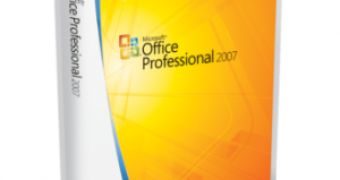The joint releases of Windows Vista and the Office 2007 System in November 2006 and January 2007, designed to be a repeat of Windows 95 and Office 95, have had an inherent result on consumer perception. The simultaneous release of the latest versions of Microsoft's flagship products indicated that the Redmond company had joined Windows Vista and Office 2007 at the hip. And, in fact, Microsoft has been little shy about marketing the intimate connection between its main cash cows, as the company's perspective over the Windows digital lifestyle reveals.
However, while moving onward to new releases of Windows and Office, some customers are indeed choosing the productivity suite and leaving Vista be. It is the case of Saudi Basic Industries Corporation. SABIC upgraded over 18,000 computers to Microsoft Office Professional 2007, but ignored Windows Vista completely, even following the introduction of Service Pack 1.
"Saudi Basic Industries Corporation (SABIC) [deployed] Office 2007 and Microsoft Office SharePoint Server 2007 to their 18,000 employees. What is interesting to me about this case study is the implied de-coupling of Vista and Office 2007. Some customers inextricably link the two, while others more aggressively deploy Office 2007, and handle the OS deployment when they refresh the desktop/laptop," revealed a member of the Microsoft Chemical Team.
SABIC obviously missed Microsoft's new marketing campaign debuted with the occasion of the company's Worldwide Partner Conference 2008 last week, and designed to build consumer perception that Windows Vista is ready for mass deployments. While gearing up to prove that indeed Vista SP1 is worth an investment, and promising that as an investment customers will reek benefits until Windows 7, Microsoft deals with yet another company which said pass to Vista, although not to Office 2007.
"We already had strategic investments in Microsoft technologies as well as a Microsoft Enterprise Agreement for low-cost volume licensing of software. So the new desktop software was the most cost-effective choice because it could protect our existing investments, and also easily integrate with other existing technologies," explained Fahad Al-Ghamdi, IT End User Services Manager for SABIC.

 14 DAY TRIAL //
14 DAY TRIAL //